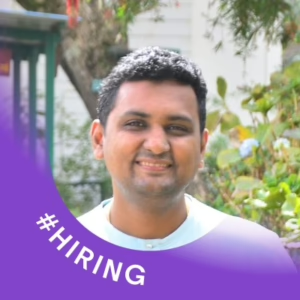We don’t have the right talent to complete all of our tasks. It’s an old story. Business leaders often say they lack the talent to implement their digital transformations and AI strategies. This issue is of paramount importance. It’s important for companies to fill vacancies, but also to ensure competitive positioning and drive growth in a complex market. Lack of skilled workers can impact productivity, hinder innovation and limit potential expansions. The need for specialized knowledge has increased exponentially as organizations push the limits of what is possible.
The crux is this: Specialized skills can be difficult to develop, both in terms of speed (since they have a shorter half-life than power skills that are transferrable) and scale. This is because companies around the world need technical skills.
A number of factors are responsible for the current shortage in skilled workers, including an ageing workforce and brain-drain without enough young workers with skills to replace them. AI and other innovations are increasing the need for technical specialists. Globalization is also increasing the competition for skilled workers.
The biggest problem in many organizations today is that they don’t know what skills they have or what they need.
This is a fundamental element that prevents all other build/buy or automate decisions to be truly effective.
What we have and what is needed
According to McKinsey, the vast majority of companies (87%) know that they have or will have a skills shortage within a few short years. Where are the skills gaps in your organization?
The first step for a company to analyze its skills gaps is to conduct a thorough evaluation of both the current and required skills within an organization. All too often, individuals are only evaluated on their resumes, past jobs, and diplomas that date back more than 20 years. They do not consider what skills they can apply today. The shortage often occurs on paper, as the skill portfolios of individuals are limited to their current roles and not what they can do at work today. Many companies may think that they lack certain skills when they actually have them hidden in the company.
This potential is unlocked by a skill-based design, because it decouples people from the job concept. They are then free to choose the tasks and projects that suit their career and skills.
Software, tools, and assessment methods can be used to support the skills-based method. The key is to consolidate this information into a single, actionable source that HR, managers, and other leaders can use.
After you have a good understanding of the skills that your employees possess, you can forecast what skills they will need in 1, 5, and 10 years. Combining strategic foresight with industry analysis and trends forecasting, businesses can get a fairly clear picture of the direction the industry will take and the skills that it will require.
Your next decision: Buy or build?
When faced with a talent shortage, many organizations resort to ‘buying.’ This is not sustainable in the long term because employers do it all the time.
Hiring will always be part of the solution. It’s also important to retrain and upskill employees and tap into contingent workers. It’s not the only solution anymore. The right skills need to be in the right places at the right times.
Four new ways to address the skills shortage
Unlock alternative talent options
A skills-based approach to hiring can reveal hidden talent that you may have overlooked, such as someone who has developed the necessary skills through side jobs, or someone upskilling themselves outside of their job through coding bootcamps, and virtual IT laboratories.
Validate your skills beyond the CV
You can use the CV to get a sense of someone’s skills, but you must ensure that they are ready to start immediately. This is not something that can be determined with certainty by an interview. Qualitative assessments by hiring managers are also not reliable. Only a scenario that tests the candidate’s skills on real-world applications can truly determine if they are job-ready.
Bring in outside expertise when required
Zuhlke, an engineering firm, is a great example of a company that can quickly hire experts and consultants to help with changing market conditions and strategy. These firms are often used by businesses that want to innovate to temporarily extend their R&D team to explore new fields of business and build core competencies. The collaboration allows the companies to develop novel products and remain agile. They can then transition the project in-house when the capabilities have been defined.
4. Upgrade your skills with the real-world in mind
There are many options for training companies in the 21st century, but they’re not all equal. Use an experiential approach, where learners are able to practice their skills repeatedly and receive feedback on how to improve. They can then be given more opportunities to stretch their abilities. This active style of learning gives learners the confidence to apply their new skills in their job.
Automate = Enhance, not Replace
Deloitte’s research indicates that intelligent, data-driven robots could replace 90% of jobs known by 2030. This would transform our work and enhance workers.
In the age of AI humans will still be needed, but their skill sets will look different. I’m sure that many more will follow. The WEF has already set out a few AI-related goals, and I expect others to do the same.
When implemented correctly, automation does not replace workers, but rather complements them. Automation allows businesses to streamline processes and increase efficiency, reducing their dependency on highly-specialized skills.
Skills are a key factor when looking to automate work in the workplace. Is the task easily computerised, or does the algorithm not have the “skill” to finish it? In the next decade, human/machine teams are going to be big. But only if their combined abilities work smoothly together.
This means that human skills must keep pace with AI advancements and new features.
A multi-faceted challenge requires a multi-faceted solution
The shortage of skilled workers is a complex issue that requires a strategic and proactive response from companies. The skilled worker shortage is not only a macroeconomic problem, but also a call for action from companies to reassess their talent management strategy.
It is important to understand the skills of the employees and their ability to perform. Businesses can overcome this skills shortage by identifying and validating the skills of their employees, anticipating future requirements, and combining ‘Buy Build or Automate’ methods.


